No products in the cart.
Understanding Diabetes from the Ayurvedic and Allopathic Perspective
The incidence of diabetes is rising. Globally, it is estimated that by 2040 approximately 642 million people will be affected with diabetes worldwide. This global pandemic principally involves type 2 diabetes; prevalence varies considerably around the world, being associated with differences in genetic factors, as well as environmental ones such as greater longevity, obesity, unsatisfactory diet, sedentary lifestyle, increasing urbanisation and economic development.
Diabetes is a major burden on health-care facilities in all countries. Globally, in 2015, diabetes caused 5 million deaths in those aged 20–79 years, and health-care expenditure attributed to diabetes was estimated to be at least 673 billion US dollars, or 12% of total health-care expenditure.
The patients who are suffering from diabetes mellitus are always at risk of developing a number of complications, associated with reduction in quality of life and an increase in individual morbidity and mortality.
In this article we will share with both the perspectives – Ayurvedic and as well as the Modern medicine point of view.
Diabetes in Ayurveda
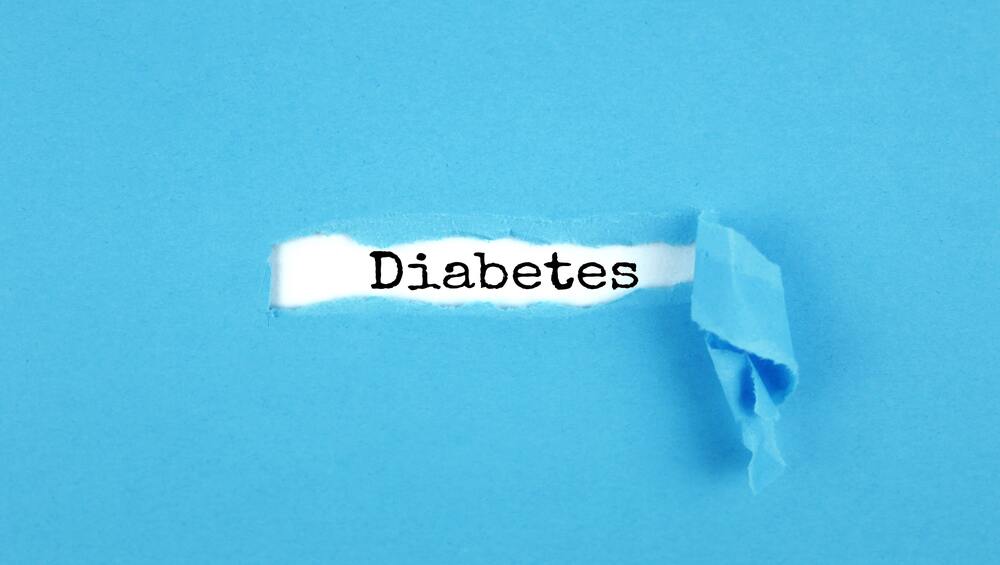
In Ayurveda a condition in which a person passes honey like (sweet) urine is called Madhumeha (Hyperglycemia). It is one among 20 types of Prameha (urological disorder) described in various Ayurvedic classics i.e., Charaka samhita, Sushruta samhita, Ashtanga sangraha, Madhava nidana, Yoga ratnakara etc. And it is clearly mentioned that all kinds of Prameha, if they are not been treated properly and timely, they can convert into Madhumeh,“सर्व एव प्रमेहास्तु काले नाप्रतिकरिण:! मधुमेहत्वायान्ति तदा असाध्या भवन्ति हि!! So Madhumeh (Diabetes) is the final and last stage of Prameh, according to Ayurveda.
And this is Asadhya, which means incurable. Acharya Charak in Charak Samhita has narrated the cause of Prameh is आस्यासुखं स्वप्नसुखं दधीनी ग्राम्यौदाकानूपरासा: पयांसि! नवान्नपानं गुड़वैकृतं च प्रमेहहेतु: कफकृच्च सर्वं !! (च.चि.6/4) it means excess use of guru (heavy to digest), snigdha (unctous), amla (Sour) and lavana(Salt) rasa, navanna (food prepared from newly harvested grains), new wine, Asya sukha (sedentary lifestyle), atinidra (excess sleep), avyayama (lack of exercise), achinta (lack of mental exercise), abstaining from samshodhana (purification) therapy are the causes of Madhumeha.
Undisciplined lifestyle caused Diabetes in 2nd B.C. and even now in 21 century. Ayurveda scientist had articulated clearly the reasons which cause Diabetes, those reasons are relevant now as they were then.
Acharya Charak has mentioned that Madhumeh (diabetes) can be genetic also and those patients are having genetic history they fall into Asadhya (incurable) category “जातः प्रमेही मधुमेहिनो वा न साध्य उक्तः स हि बीजदोषात! ये चापिकेचित कुलजा विकारा भवन्ति तांश्च प्रवदत्यसाध्यान!! (च.चि.6/57). Here Asadhya are of two types, one is known as “Yapya” it means, that the disease can’t be cured but the patient can survive if they take the medicine for life-long. Second is “Pratyakhyey” in this condition, patient suffering from the disease can’t be treated by any means, they die with the disease. In Ayurveda, it is clearly mentioned that all kinds of madhumeh which are genetic are not Asadhya, some of the conditions are curable also.
Diabetes mellitus is a clinical syndrome characterised by an increase in plasma blood glucose (hyperglycaemia). It has many causes, most commonly type 1 or type 2 diabetes. Type 1 diabetes is generally considered to result from autoimmune destruction of insulin-producing cells (β cells) in the pancreas, leading to marked insulin deficiency, whereas type 2 diabetes is characterised by reduced sensitivity to the action of insulin and an inability to produce sufficient insulin to overcome this ‘insulin resistance’. Hyperglycemia causes both acute and long-term problems. Acutely, high glucose and lack of insulin can result in marked symptoms, metabolic decompensation and hospitalisation. Chronic hyperglycemia is responsible for diabetes-specific ‘microvascular’ complications affecting the eyes (retinopathy), kidneys (nephropathy) and feet (neuropathy).
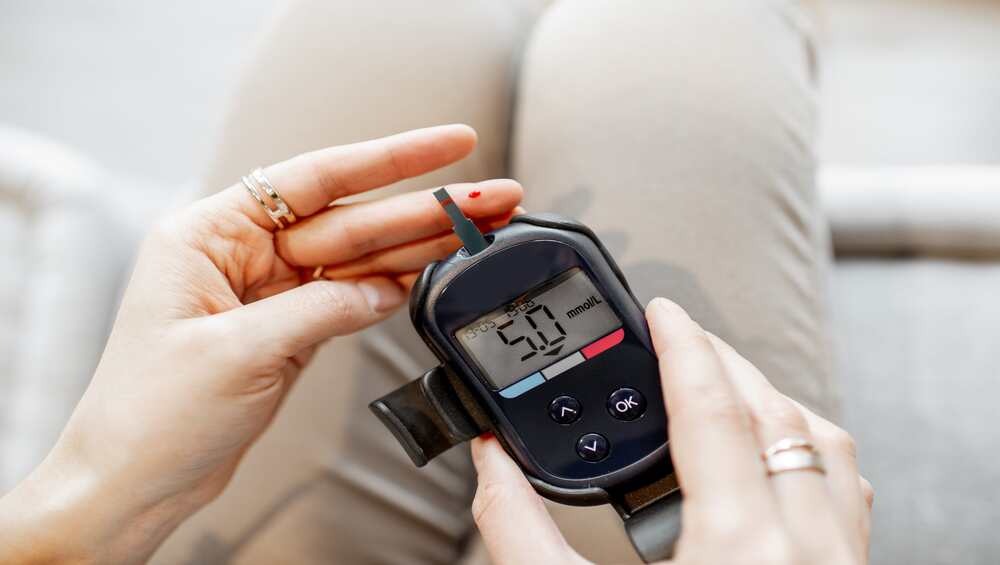
According to Ayurveda all three Doshas get vitiated and affect 10 most vital elements of the body and causes Madhumeh (Diabetes). कफः सपित्तः पवनश्च दोषा मेदोअस्रशुक्राम्बुवसालसीका:! मज्जा रसौजः पिशितं च दुश्याः प्रमेहिणाम, विन्शातिरेवामेहा:!! (च.चि.6/8). As per the Ayurvedic pathogenesis initially all the Prameha are due to vitiation of “Kapha”. There are 10 types of Prameha due to Kapha, 6 types are due to Pitta and the last 4 types are due to Vata disorder. According to Achary Charak Diabetes which is known as Madhumeh is due to Vata disorder. In all kinds of Prameha the most affected vital elements are 1. रस (the first tissue element which can be recognized as the final juice of food after digestion), 2. मेदा (fat), 3. रक्त- Blood, 4. अम्बु -body water, 5. वसा-adipose tissue, 6. लसीका- lymph fluid, 7. मांस -muscle,8. मज्जा- bone marrow, 9. शुक्र- reproductive fluids i.e. semen and 10. ओज -Ojas (defence system). As per the Ayurveda it is not necessary that all these elements should be defected in all kinds of Prameha but it is certain that due to improper functionong, in any of these elements Prameha occurs. Involvement of Kidney in Diabetes is clearly mentioned in Ayurveda and it is said that body fat, fluid, bone marrow and Ojas starts eliminating through urine in diabetes.
Diabetes is a metabolic disorder, the entire metabolism in the body is controlled by the biological fire, according to Ayurveda. There are 13 types of अग्नि (fire) in the body. The principal fire is known as जठराग्नि (digestive fire) which nourishes the further 12 types (7 धात्वाग्नी/ tissue elements and 5 भूताग्नी/main elements i.e. earth, water, fire, air and space). The place of भूताग्नी is liver. Acharya Charak has given a clear indication in treatment of diabetes to take care of Agni “प्रसमीक्ष्य वह्नि” च.चि.6/17. Every element has their own fire and is responsible to digest and produce the energy. If the Agni/fire of any element is reduced or inappropriate then there is possibility of improper digestion, on a subtle level this digestion is considered as metabolism, because finally the energy production in the form of ATP in the mitochondria is the result of metabolism.
Diabetes mellitus results from diminished secretion of Insulin from the beta cells of the islet of Langerhans of Pancreas. Heredity usually plays a major role in determining who will get diabetes and whom it will not.
Sometimes it does this by increasing susceptibility of the beta cells to viruses, or by favouring the development of autoimmune antibodies against the beta cells, thus leading to their destruction. In other instances, there appears to be a simple hereditary tendency for beta cell degeneration. Obesity also plays an important role in the development of clinical diabetes. One reason is that in obesity the beta cells of the islet of Langerhans become less responsive to stimulation by increased blood glucose; therefore, the blood insulin levels do not increase when needed. Another reason is that obesity decreases the number of insulin receptors in the insulin, thus making the amount of insulin that is available even less effective in promoting its usual metabolic effect.
Obesity is one of the major health problems due to vitiation of Kapha, and Ayurveda says that initially all kinds of Prameha are due to Kapha imbalance but due to excess Vata imbalance Madhumeh occurs, in extreme vitiated condition, Vata affects the beta cells and causes either complete destruction or degenerates the cells. As degeneration, cell proliferation and division are governed by Vata.
Insulin secretion is associated with energy abundance. That is, when there is great abundance of energy-giving foods in the diet, insulin is secreted in great quantities. This is especially true for excess carbohydrates, less for excess protein, and slightly even for fats. One of the main functions of सामान वायु is to improve or accelerate the digestive fire. Insulin is a hormone which affects the metabolism of carbohydrate, fat and protein and is closely related with the pitta. So, if there is extreme Vata disorder, it can disturb the pitta and thus Insulin secretion too is affected.

The liver functions as a very important blood glucose buffer system. That is, when the blood glucose rises to a very high concentration following a meal and the rate of insulin secretion also increases, as much as two thirds of the glucose absorbed from the gut is almost immediately stored in the liver and muscles in the form of Glycogen. Then, during the succeeding hours, when the blood glucose concentration and the rate of insulin secretion fall, the liver releases the glucose back into the blood. In this way, the liver decreases the fluctuations in the blood glucose concentration to about one-third what they otherwise would be. In fact, in patients with severe liver diseases, it becomes almost impossible to maintain a narrow range of blood glucose concentration.
Most of the pathologic features of diabetes mellitus can be attributed to one of the following three major effects of the lack of insulin: (1) decrease utilization of glucose by the body cells, with a resultant increase in blood glucose concentration to as high as 300 to 1200 mg/dl; (2) markedly increased mobilization of fats from the fat storage areas, causing abnormal fat metabolism as well as deposition of cholesterol in arterial walls, causing atherosclerosis; and (3) depletion of protein in the tissue of the body. From the ayurvedic point of view it is clearly mention that fat (मेद), adipose tissues (वसा), and kapha in the form of body building material that is protein get affected in diabetes. मेदश्च मांसं च शरीररजं च क्लेदं कफो वस्तिगतं प्रदुष्य ! करोति मेंहान……………………!! (च. चि. 6/5). And how nicely it is narrated that all these pass through urine.
In Ayurvedic pathogenesis, the body water (अम्बु) also gets affected in diabetes and from modern science this has proven the dehydrating effect of elevated blood glucose level. A significant effect of elevated blood glucose is dehydration of the tissue cells, for glucose does not diffuse easily through the pores of the cell membrane, and the increased osmotic pressure in the extracellular fluids causes osmotic transfer of the water out of the cells. In addition to the direct cellular dehydrating effect of excessive glucose, the loss of glucose in the urine causes osmotic diuresis because the osmotic effect of glucose in the tubules greatly decreases tubular reabsorption of fluid. The overall effect is of the extracellular and intracellular fluid.
Blood glucose levels have to be tightly regulated and maintained within a narrow range. This is essential for ensuring a continuous supply of glucose to the central nervous system. The brain has little capacity to store energy in the form of glycogen or triglyceride, and the blood–brain barrier is largely impermeable to fatty acids, so the brain depends on the liver for a constant supply of glucose for oxidation and hence generation of ATP. Glucose homeostasis is achieved through the coordinated actions of multiple organs, but mainly reflects a balance between the entry of glucose into the circulation from the liver, supplemented by intestinal absorption of glucose after meals, and the uptake of glucose by peripheral tissues, particularly skeletal muscle and brain. After ingestion of a meal containing carbohydrate, normal blood glucose levels are maintained by:
- suppression of hepatic glucose production
- stimulation of hepatic glucose uptake
- stimulation of glucose uptake by peripheral tissues
The postprandial rise in portal vein insulin and glucose, together with a fall in portal glucagon concentrations, suppresses hepatic glucose production and results in net hepatic glucose uptake. Depending on the size of the carbohydrate load, around one-quarter to one-third of ingested glucose is taken up in the liver. In addition, insulin stimulates glucose uptake in skeletal muscle and fat, mediated by the glucose transporter GLUT4.
When intestinal glucose absorption declines between meals, portal vein insulin and glucose concentrations fall while glucagon levels rise. This leads to increased hepatic glucose output via gluconeogenesis and glycogen breakdown. The liver now resumes net glucose production and glucose homeostasis is maintained.
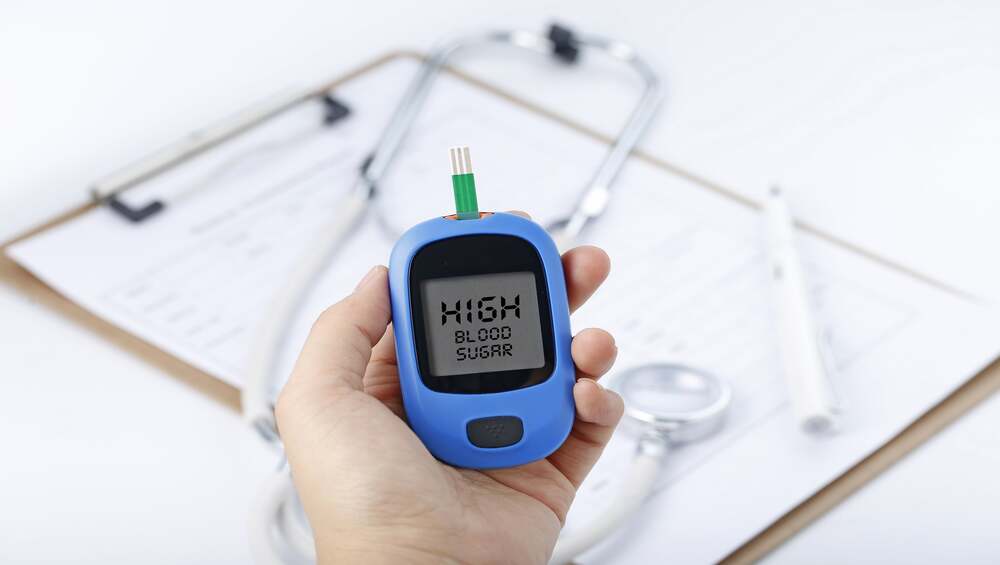
Adipocytes (and the liver) synthesise triglyceride from non-esterified (‘free’) fatty acids (FFAs) and glycerol. Insulin is the major regulator not only of glucose metabolism but also of fatty acid metabolism. High insulin levels after meals promote triglyceride accumulation. In contrast, in the fasting state, low insulin levels permit lipolysis and the release into the circulation of FFAs (and glycerol), which can be oxidised by many tissues. Their partial oxidation in the liver provides energy to drive gluconeogenesis and also produces ketone bodies (acetoacetate, which can be reduced to 3-hydroxybutyrate or decarboxylated to acetone), which are generated in hepatocyte mitochondria. Ketone bodies are organic acids that, when formed in small amounts, are oxidised and utilised as metabolic fuel. However, the rate of utilisation of ketone bodies by peripheral tissues is limited, and when the rate of production by the liver exceeds their removal, hyperketonemia results.
The liver is considered as the main organ where भूताग्नी(Bhutagni) performs its action. In case of lack of any भूताग्नी can cause improper metabolism of a particular element. As per Ayurveda, everything in the universe is composed of five great elements, various state of matter depends upon the specific ratio and composition of these elements and thus define the form and state of matter e.g. wood, iron, gold, water, acid, gas etc. likewise the various enzymes, hormones, food items in the form of carbohydrate, fat, protein etc are all composed of a specific composition of these five elements. Ayurveda gives a fundamental concept of metabolism, modern science just explores it, and defines it, in more detail to make it easy to understand.
You can also try DIABZA – 100% Herbal Diabetes Supplement, The herbs used in DIABZA are considered to have anti-diabetic properties. Also helps in improving liver and kidney functions.
Symptoms-

स्वेदो अंगगंधा शिथिलाङता च शय्यासनस्वप्न्सुखे रतिश्च! हृदनेत्रजिह्वा श्रवणोंपदेहो घनाङगता केशनखातिवृद्धि:!!
शीतप्रियत्वं गलतालुशोषो माधुर्यमास्ये करपाददाहः! भविश्यतो मेहगदस्य रूपं मुत्रेअभिधावन्ति पिपिलिकाश्च !! (च. चि. 6/13-14)
स्वेदो (profuse sweating) अंगगंधा (specific body odor) शिथिलाङता (lethargies) शय्यासन (like to sit at one place) स्वप्न्सुखे (like to sleep more) हृदनेत्रजिह्वा श्रवणोंपदेहो (feeling of heaviness over cardiac region, excess waste material in the eyes and ear) घनाङगता (thickness of the body part)केशनखातिवृद्धि:(excess growth ofhair and nails) शीतप्रियत्वं(affinity to cold) गलतालुशोषो (feeling of dryness in mouth and throat) माधुर्यमास्ये(feeling of sweetness in the mouth) करपाददाहः (burning in hand and feet) मुत्रेअभिधावन्ति पिपिलिकाश्च (ants movement at the urinated place). These are the Pre-symptoms of Diabetes according to Ayurveda. Other than these symptoms प्रभूत आविल मुत्रता (excessive elimination of dirty urine i.e., polyuria) is one of the most common symptoms of prameh/diabetes. Polyuria (excessive elimination of urine) due to the osmotic diuretic effect of glucose in the kidney tubules, polydipsia (excessive drinking water due to गलतालुशोषो) due to dehydration resulting from polyuria, polyphagia (excessive eating) due to failure of glucose and protein utilization by the body causes loss of weight and a tendency toward polyphagia, loss of weight and asthenia (lack of energy i.e.शय्यासन and शिथिलाङता) due to loss of protein and improper utilization and metabolism of glucose and fat. These are the earliest symptoms of diabetes according to modern science. (Gyton)
Common symptoms as the modern medical system are thirst, dry mouth, polyuria, nocturia, tiredness, fatigue, lethargy, change in weight (usually weight loss), blurring of vision, pruritus vulvae, balanitis (genital candidiasis), nausea, headache, hyperphagia; predilection for sweet foods, mood change, irritability, difficulty in concentrating, apathy are the major symptoms of diabetes. So, if we correlate the symptoms from Ayurvedic and modern point of view, both are more or less
Therapeutic approach of Ayurveda for Diabetes
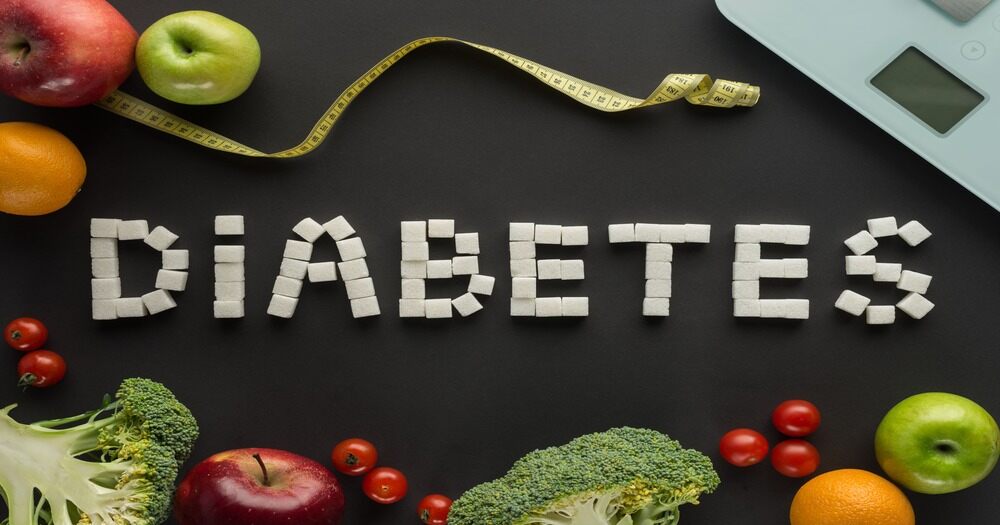
येहेतुभिर्ये प्रभवन्ति मेहास्तेषु प्रमेहेषु न ते निषेब्या: ! (च.चि.6/53)
It means one should avoid all those specific factors or reasons which cause specific types of diabetes. As it is already mentioned above in this article that there are 20 types of Prameha and Madhumeh (Diabetes) is one of them. Therefore, Acharya has clearly stated that there might be different reasons for different types of Prameha and one should identify it and avoid it.
“प्रसमीक्ष्य वह्नि” च.चि.6/17.
Acharya Charak has given a clear indication in the treatment of diabetes to take care of Agni. It is apparent that the pathogenesis of Diabetes is moving around the metabolism and the entire metabolic process is regulated by fire. Clinically one can observe the imbalanced fire whether it is digestive or at metabolic level. In most cases of diabetes, patients can’t tolerate their hunger for the food and they eat frequently and more in quantity at the same time due to lack of fire at cellular level they start depositing fat (मेदा). Therefore, during the treatment of diabetes one should take care of digestive fire and the given fuel i.e. type of food and at the same time select the herbs that can accelerate the tissue elemental fire at the cellular level.
स्थूलः प्रमेही बलवानिहैकः क्रिश्स्तथैकः परिदुर्बलश्च ! सम्ब्रिहणम तत्र कृशस्य कायं संशोधनं दोषबलाधिकस्य !! (च.चि.6/15)
There are two types of diabetic patients; one becomes obese and strong and the other becomes lean, thin, and weak. Those who are lean, thin and weak, they should be treated with highly nutritious diet and those who are obese and strong they should be treated with Panchkarma or purification method.
Acharya charak has given the two names; one is Ojomeh and second is Madhumeh. Both are the same but mentioned at two different places in the classics. It means one should give prime importance to maintaining the Ojas in the treatment of Diabetes. In Ayurveda, Ojas is related to the overall inner strength that is the Immune system. It is clear from the research that Type 1 diabetes is the result of autoimmune destruction of beta cells. Therefore, in the treatment of diabetes one should select those herbs who have the property to improve Ojas.
व्यायामयोगै विविधे: प्रगाढेउद्वार्तने: …………(च.चि.6/50)
One should do a different type of regular exercises and should go for a strong powder massage i.e उद्वर्तन. This is very useful to mobilize deposited fat and stored glycogen into the circulation for further metabolism.
भ्रिश्टान यवान भक्षयत: ……..One should use roasted (or in any form) barley instead of wheat.
All those herbs which are having hepatoprotective properties, they should be selected in the treatment of Diabetes. Because, the role of the liver in metabolism of carbohydrate, fat and protein is already proven. Many researches have already proven that those herbs are good for the liver. They have proven a promising result in lowering the blood sugar level. For example, पुनर्नवा (boerhavia diffusa)- The production of insulin from the β pancreatic cells becomes active while taking this herb. It helps to reduce the breakdown of starch into glucose which in turn prevents the spike in blood sugar. Likewise, there are many herbs which are very effective in treating diabetes that are having properties to improve liver function.
As per the fundamental concept of prameh, the kidney plays an important role, therefore, one should select the herbs that are having property to improve the kidney functions. For example, गोक्षुर (Terrebulus terrestris) is one of known herbs which is very effective in treating various kidney disorders, researchers have proven that Saponin present in Gokshura has blood sugar lowering properties. It helps lower the level of serum glucose, serum triglyceride, and serum cholesterol due to its antioxidant property

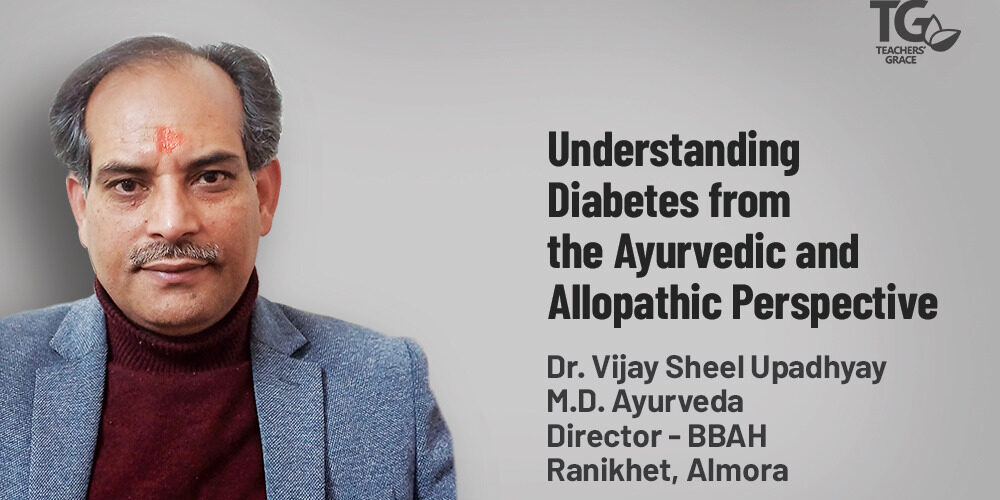

2 Comments